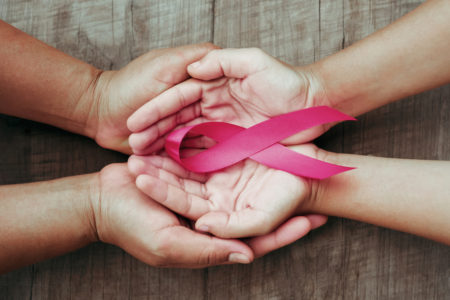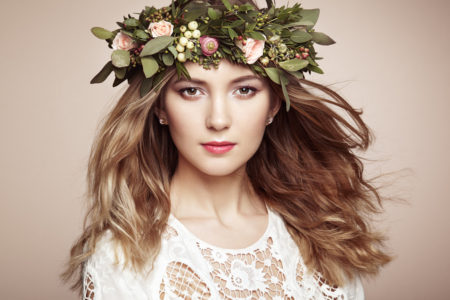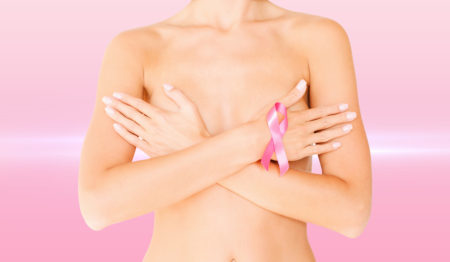New breast cancer facts have recently been released, and updating them should increase our awareness. Here at Florida Lung, Asthma and Sleep Specialists, we are facing the golden leaves and pink ribbons that mark every autumn. So we put aside our usual pulmonary topics and focus on breast cancer awareness. It’s a time to celebrate survivors and remember those who lost their fight against this ugly disease.
The new breast cancer facts, released by the National Breast Cancer Association, prove that statistics can provoke emotion. Here are some examples for you, your mom, your sister, your daughter or your friend:
- Did you know that on an average, a woman in the US is diagnosed with this disease every two minutes?
- Are you aware that one of our most egregious facts is a death toll? It’s a fact. An estimated 41,760 women will die from this dreaded fate, in the U.S.alone.
Another breast cancer fact reveals that breast cancer will attack 1 in 8 women in the United States at some time in their lives. It might not be fatal. However, the facts guarantee it will be miserable.
New Breast Cancer Facts Are a Global Issue

Awareness: Support and Advocacy Are in Your Hands For Breast Cancer Patients.
Other than skin cancer, breast cancer is the most common type for women according to the World Health Organization. This means that, although we have made strides in its treatment, facts and statistics prove it is the most common cancer among women worldwide. Breast cancer is “claiming the lives of hundreds of thousands of women each year and affecting countries at all levels of modernization.”
In this article, we present some new breast cancer facts to you. The fresh knowledge a tribute to those women, wives, and mothers who cry out for a cure as well as those who sleep in eternal peace. That’s what breast cancer awareness is all about.
Some Good News for Breast Cancer Victims
We must not let these sad facts blind us. Great work in research and treatment have occurred in recent years. Experts believe there is a reason for the decline in deaths. This is partially due to the fact that doctors lessened the use of hormone replacement therapy. Thus we saw a gradual reduction in the disease among women aged 50 and older. Likewise, we applaud the fact that early detection, public education, and new treatments have saved many women’s lives.
- Therefore, we are proud to report “there are over 3.1 million breast cancer survivors in the United States.” While we should be excited about the improvement in death rates, experts are distressed to see the numbers also show that not all women have benefited equally.
- Another new fact is that we now know there is a huge disparity among races. There is a great deal of ongoing research about the reasons. Statistics show African-American women are, on average, about 40 percent more likely to die from this disease than their white counterparts.
- This disparity might be related to the timing and quality of care. For example, for some mysterious reason, doctors are finding the disease in younger African-American women. And they have a more aggressive form..
Equally distressing is the statistic that breast cancer is still extremely high as the cause of death among Hispanic women.
Thus, the more we learn about new breast cancer facts, the more mysteries we uncover. It’s clear that we still have much to discover about the causes and risks. Therefore, Florida Lung, Asthma and Sleep Specialists believe we have all the more reason to continue to build awareness of the facts.
Empowering Breast Cancer Awareness With New Facts and Old Pink Ribbons
It’s hard to imagine, but the pink ribbons of October are now 27 years old. The iconic symbol of our fight has a story. The story belongs to several women, including a breast cancer survivor.
Empowering an Iconic Symbol
Facts The journey of the pink ribbon from baby dresses to super-power symbol began back in the days when women barely discussed “the big C” openly. They only whispered in horror, pity, and embarrassment if they heard about a friend’s diagnosis. In fact, the ribbon favor and the special color of it have separate stories behind them.
New Breast Cancer Traditions: Story of a Scrap of Ribbon and A Symbol

Fall Brings a New Kind of Flower and a New Awareness.
In 1979, Penney Laingen’s husband was one of the prisoners during the Iran hostage crisis. She used the yellow ribbon as a support symbol for him and his fellow hostages. “Its history goes back much further. It is mentioned in five-hundred-year-old poems. Music used the idea in military marches, folk songs, and even in films. But Penney Laingen used it for the first time publicly as a silent voice of support.”
A Symbol Empowering Emotional Colors
In 1989, a politically aware art group, Visual AIDS, utilized the same kind of looped ribbon. But it was bright blood-red in color. https://visualaids.org/events/detail/red-ribbon
It took its message of AIDS awareness and support onto the Tony Awards. At the Awards, Jeremy Irons wore it. Suddenly ribbons for awareness of every type of charity became overnight sensations. By 1992, we saw the New York Times declare the year to be “The Year of the Ribbon.”
Breast Cancer Facts: Peach Ribbons Came before Pink
Charlotte Hayley, who had battled breast cancer, introduced the ribbon in a stylish peach color. The awareness ribbon’s metamorphosis was politically empowering and ahead of its time. She attached them to thousands of cards which bore a message. “The National Cancer Institute’s annual budget is 1.8 billion US dollars, and only 5 percent goes to cancer prevention. Help us wake up our legislators and America by wearing this ribbon.”
Hayley’s peach ribbon electrified Alexandra Penney, editor in chief of Self magazine. However, Hayley rejected the idea of working together because she thought it was too commercial. So, Penny and other awareness promoters selected pink as the awareness ribbon color for the breast cancer cause.
Empowering the First Pink Ribbons: Susan G. Komen Breast Cancer Foundation
It was the Susan G. Komen Breast Cancer Foundation who really secured the first classic dispersal of the ribbons. “In fall 1991, mere months after Irons’ electrifying appearance, the foundation gave out pink ribbons to every participant in its New York City race for the cure.
Empowering Lipstick, Politics and Breast Cancer Awareness
Meanwhile, Penney discovered she could not pin ribbons onto her magazines. So, she phoned Evelyn Lauder of Estee Lauder Cosmetics. Evelyn Lauder enthusiastically authorized the distribution of the pink ribbons from Estee Lauder cosmetic counters.
Empowering the Pink Ribbon with a Social Conscience and a Medical Purpose
Penney wrote about how much more the ribbon meant than personal emotional investment. The pink ribbon also meant voter power. In the October 1992 issue of Self magazine, Penney placed this statement. “We’ll be collecting signatures from all of you who write us for a ribbon or who go to an Estee Lauder counter for one. And I’ll take the signatures to Washington as a reminder to the President that breast cancer research and treatment should remain a top priority.” Alexandra Penney
And that is a nutshell is how the ribbon changed from mere decoration to meaningful symbol to instrumental influencer.
In October, our cities will be ablaze with pink ribbons. We see them in every place of business, in homes, schools and countless awareness events. Those humble pink loops of ribbon have gone far beyond commercialism, politicization, and legislation. It has created a sense of community and purpose. The ribbon has raised hundreds of millions of dollars. The dollars have been used to finance and legislate breast cancer screening, treatment, and medical technology through world-class research.
Under the banner of the pink ribbons more than 3.1 million US patients in the US, including some who are still in treatment, are alive today. They are thriving in spite of their battle with breast cancer. “A woman’s risk of dying dropped 38 percent between the late 1980s and 2014.” That means 297,300 fewer breast cancer deaths during that time.
A Scientific and Cultural Icon

Awareness and Its Pink Ribbons
The awareness inspired by the little pink ribbon has become indelibly engraved on our hearts. However, the ribbon might become a little frayed because its journey is not complete. As of 2017, statistics still said 1 out of 37 women diagnosed with the disease will die. And we answer we do not like those odds.
Statistics also say if the current trend continues, 40,610 women will die needlessly in the next year. And we say the little pink ribbon cannot retire although it has been working very hard for 27 years.
in the story above, Evelyn Lauder co-created the breast cancer awareness as well as the empowering pink ribbon.
At Florida Lung, Asthma and Sleep Study Specialists, we wear our pink ribbons to remind you of three things:
- Early Detection is the best protection.
- Mark your mammogram appointment on your calendar now.
- Protecting your breasts with early detection today will also protect your entire health tomorrow. Remember, breast cancer can spread to lungs, liver, spine, bone and more.
FLASS leaves you with this pink quote.
“I lost my mom to breast cancer about three years ago, and it has changed me forever.” Trisha Yearwood

